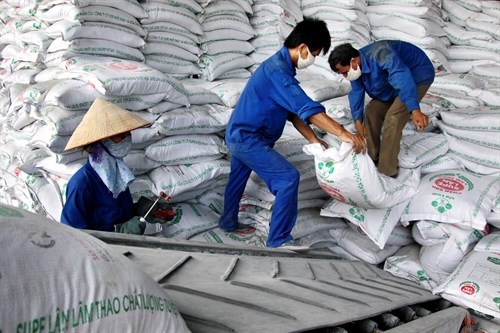Investors optimistic for 2016
Vietnamese investors are expecting more transactions from State-owned enterprises’ (SOE) equitisation rather than by private/family firm owners, Grant Thornton Vietnam’s latest survey said.
 Illustrative image (Source: VNA)
Illustrative image (Source: VNA)In the 14th survey on the private equity sector, carried out between December 2015 and January 2016, a majority of the respondents maintain their positive views about Vietnam’s economy. Eighty-six percent of the respondents expect the level of investment activities to increase in Vietnam in the next 12 months.
Grant Thornton Vietnam said the positive outlook of the market was the result of various improvements made recently, such as two legislative changes to promote private sector participation in the Government’s infrastructure projects and increased foreign ownership limits in listed companies, the ASEAN Economic Community (AEC) and the Trans-Pacific Partnership (TPP).
According to an assessment made by the American Chamber of Commerce, Vietnam ranked second among the AEC members and the first among the TPP members that received more investments after joining the groups, the survey said.
It is expected that Vietnam will receive more FDI on the back of the AEC’s removal of non-tariff barriers, removal of tariff from more than 90 percent of the goods currently subject to tariffs, and a reduction in others between now and 2018.
The TPP membership will help Vietnam to integrate with the global supply chain and also increase its trade volume with major economies such as Japan and the United States.
The survey also found that a majority of participants expected to be “net buyers” rather than “net sellers” in 2016.
In 2015, 222 SOEs were equitised, raising the number of equitised SOEs to 478 for the 2011-15 period. The government aims to equitise about 174 SOEs in the 2016-20 period.
Nevertheless, private equity investors expect more supply from equitisation, and are awaiting “major names” such as Mobifone, Satra, Benthanh Group and EVN, as well as PVN, TKN and Vinachem.
The retail sector and the food and beverage sector are currently considered the two most attractive industries for Price Earnings transactions. They were selected by 51 percent and 41 percent of the respondents, respectively.
Vietnam is being considered to be one of the most promising consumer markets in Asia, benefiting from a large population, rapid growth of per capita income, and increasing urbanisation.
According to A T Kearney, a well-established global consulting firm headquartered in Chicago, the attractiveness of Vietnam’s retail sector was ranked 28th globally. Though fast-growing in recent years, the sector is in its early development phase, with modern trade channels accounting for just 20 percent, which is fairly low compared with other regional countries.
The large population with a growing middle class, together with growing urbanisation that will cause changes in shopping habits, will provide solid support to facilitate faster growth rates, expected at CAGR 13 percent in the 2015-2018 period. This has lured both large international and domestic investors such as Berli Jucker (Thailand), Aeon (Japan) and Vingroup, creating fierce competition in this industry.
With the retail sector opening up for investments, it is expected that there will be more PE transactions in this sector in 2016.
Having key drivers similar to the retail sector, the demand for the food and beverage sector is rising fast. The increase in disposable income levels has caused diversified demand from low-to-high end products, changes in lifestyles, and the habit of drinking and eating out, particularly in major cities. It is expected that during the 2015-2020 period, the growth rates of beverage sub-sectors and packaged/fast food sub-sectors will be in range of seven to 11 percent and three to nine percent, respectively.
The survey said 39 percent of the respondents chose transportation and logistics as the third most attractive industry sector. There is anticipation of increasing SOE divestments in major ports such as Saigon Port and Vinalines in 2016.-VNA













